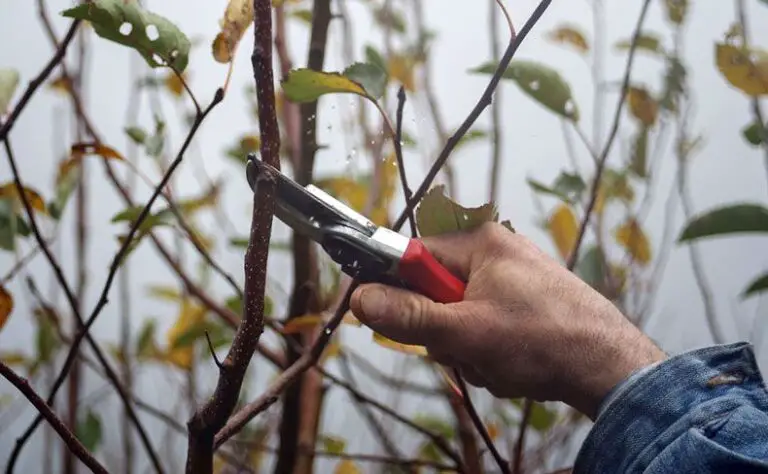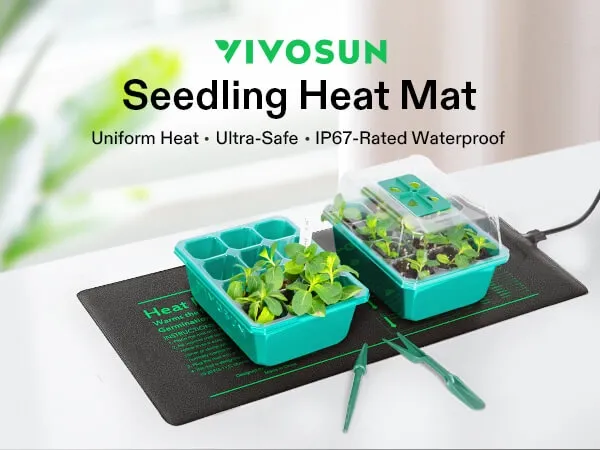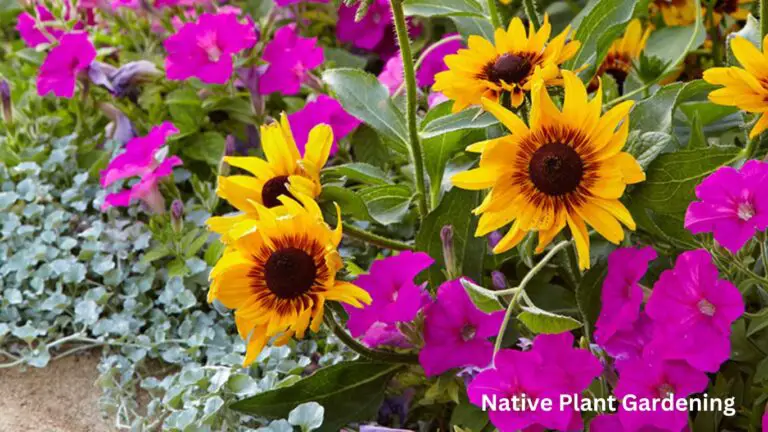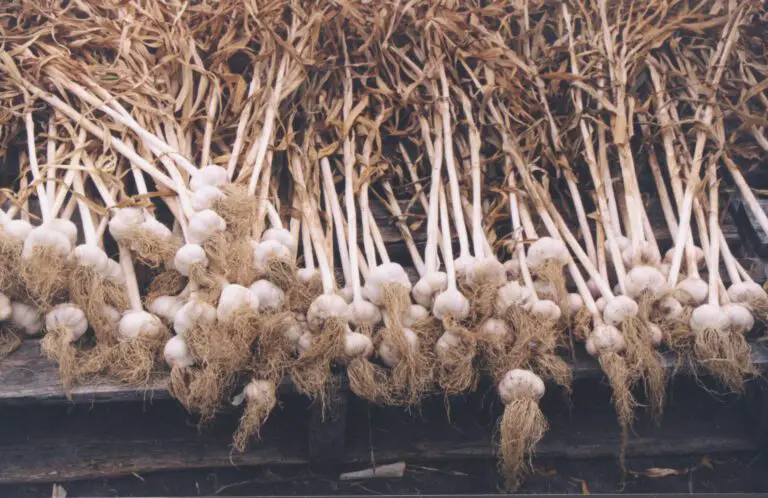Peace Lilies: Your Ultimate Care Guide
Table of Contents
Understanding the Peace Lily: An Overview of this Popular Houseplant
The Peace Lily, scientifically known as Spathiphyllum, is a highly popular houseplant cherished for its beauty and ability to thrive in indoor environments. With its attractive dark green foliage and elegant white flowers, it adds a touch of tranquility and sophistication to any space. This evergreen plant belongs to the Araceae family and is native to the tropical regions of America and southeastern Asia.
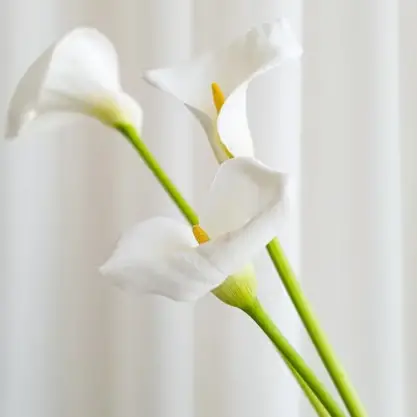
One of the distinctive features of the Peace Lily is its ability to purify the air by removing harmful toxins, such as formaldehyde, benzene, and carbon monoxide. Studies have shown that this plant can effectively improve indoor air quality, making it an excellent choice for homes and offices. Additionally, the Peace Lily is known for its resilience and adaptability, making it a suitable option for both inexperienced and seasoned gardeners looking to add a touch of nature to their surroundings.
| Aspect | Details |
|---|---|
| Scientific Name | Spathiphyllum |
| Popular Houseplant | Highly popular for its beauty and adaptability as a houseplant. |
| Appearance | Dark green foliage with elegant white flowers, adding tranquility and sophistication to indoor spaces. |
| Air Purification | Effectively removes harmful toxins such as formaldehyde, benzene, and carbon monoxide, improving indoor air quality. |
| Resilience and Adaptability | Suitable for both inexperienced and seasoned gardeners; easy to care for and thrives in various indoor environments. |
| Lighting Requirements | Tolerates low light conditions but thrives best in bright indirect light; ideal placement near north-facing or several feet away from east or west-facing windows. |
| Temperature Range | Prefers temperatures between 65-85°F (18-29°C); avoid extreme temperatures and drafty areas. |
| Watering Needs | Prefers moist soil but should not be overwatered; water once a week or when the top inch of soil feels dry; avoid letting water sit in the saucer to prevent root rot. |
| Maintenance | Requires minimal maintenance compared to other houseplants; suitable for areas with limited sunlight. |
| Fertilizing | Fertilize once every two months during the growing season (spring and summer) with a balanced houseplant fertilizer; follow instructions on the packaging to prevent overfertilization. |
| Propagation | Can be propagated through division or stem cuttings; dividing mature plants or rooting stem cuttings in water or soil are effective methods. |
Choosing the Perfect Location: Providing Optimal Light and Temperature for Peace Lilies
Choosing the perfect location for your peace lilies is crucial to their overall health and growth. These elegant houseplants thrive in bright, indirect light, so finding the right spot in your home is essential. Aim for a location that receives ample natural light, but avoid placing them in direct sunlight, as this can scorch their delicate leaves. A north or east-facing window is often an excellent choice, providing gentle morning or afternoon light without the intensity of the midday sun. If you don’t have access to sufficient natural light, consider supplementing with artificial grow lights to ensure your peace lilies receive the necessary light energy for photosynthesis.
| Care Aspect | Details |
|---|---|
| Light Requirements | Aim for ample natural light, but avoid direct sunlight to prevent leaf scorching. Consider north or east-facing windows. Supplement with artificial grow lights if natural light is insufficient. |
| Temperature Preferences | Peace Lilies prefer temperatures between 65°F and 80°F (18°C to 27°C). Avoid cold drafts from doors, windows, or air conditioning vents. Maintain a stable and comfortable temperature range. |
The Art of Watering: Properly Hydrating Your Peace Lily for Healthy Growth
Watering is a crucial element in the care of peace lilies, as it directly affects their growth and overall health. The key to properly hydrating your peace lily lies in finding the right balance between under-watering and over-watering. These plants thrive in moist but not waterlogged conditions, as excessive moisture can lead to root rot and other plant diseases. To establish an effective watering routine, it is essential to understand the signs that indicate your peace lily is thirsty.

One way to gauge when your peace lily needs watering is by checking the moisture level of the soil. Stick your finger about an inch into the soil, and if it feels dry, it is time to water. However, it is vital to note that underwatering can cause the plant to wilt and its leaves to lose their vibrant green color. Remember that these plants prefer slightly damp soil, so avoid allowing the soil to completely dry out. By mastering the art of watering, you can ensure healthy growth and robust beauty in your peace lily.
• Stick your finger about an inch into the soil to check for dryness
• Underwatering can cause wilting and loss of vibrant green color in leaves
• Develop a watering routine based on the needs of your specific peace lily
• Avoid allowing the soil to completely dry out
Feeding and Fertilizing: Nurturing Your Peace Lily with the Right Nutrients
Feeding and fertilizing are crucial aspects of nurturing a healthy and thriving peace lily. These plants have specific nutrient requirements that must be met to ensure optimal growth and development. Providing the right nutrients not only enhances the beauty of the peace lily but also promotes its overall health and vigor.
One of the essential nutrients for peace lilies is nitrogen. Nitrogen is vital for the production of chlorophyll, which is responsible for the plant’s green color and its ability to harness sunlight for energy. In addition to nitrogen, peace lilies also benefit from phosphorus and potassium. It is important to choose a well-balanced fertilizer that contains these essential nutrients in the appropriate ratios.
| Nutrient | Role in Peace Lily Growth | Guidance |
|---|---|---|
| Nitrogen | Crucial for chlorophyll production, giving green color and aiding in sunlight absorption for energy. | Choose a well-balanced fertilizer with nitrogen. |
| Phosphorus | Promotes root development and flowering in peace lilies. | Look for a fertilizer that includes phosphorus. |
| Potassium | Enhances overall plant health and increases disease resistance. | Select a fertilizer with a balanced amount of potassium. |
| Choosing Fertilizer | Opt for a well-balanced fertilizer containing nitrogen, phosphorus, and potassium in appropriate ratios. | Ensure the fertilizer meets the nutrient needs of peace lilies. |
Potting and Repotting: Creating the Ideal Home for Your Peace Lily
Creating the ideal home for your Peace Lily begins with selecting the right pot size. When repotting, it’s important to choose a container that is one to two inches larger in diameter than the current pot. This allows room for the plant’s roots to grow without overwhelming the new space. Additionally, select a pot with drainage holes to prevent water from accumulating and causing root rot.
Next, choose a potting mix that provides the right balance of moisture retention and drainage. A quality mix specifically formulated for indoor plants, containing peat moss, perlite, and compost, is an excellent choice. These ingredients promote healthy root growth and ensure adequate aeration for the plant.

When it comes to actually repotting your Peace Lily, gently remove it from its current container, being careful not to damage the roots. Loosen any compacted soil and trim any dead or damaged roots. Place the plant in the new pot, ensuring that the top of the root ball is level with or slightly below the rim of the container. Fill the remaining space with fresh potting mix, firming it gently around the roots. Finally, water thoroughly and place the newly repotted Peace Lily in a suitable location, providing it with the optimal light and temperature conditions for healthy growth.
| Repotting Steps | Details |
|---|---|
| Selecting the Right Pot | Choose a pot 1-2 inches larger in diameter than the current one, with drainage holes to prevent root rot. |
| Choosing the Right Potting Mix | Use an indoor plant potting mix with peat moss, perlite, and compost for optimal growth. |
| Removing the Peace Lily from its Current Container | Gently remove the plant without damaging the roots, loosening compacted soil, and trimming damaged roots. |
| Placing in the New Container | Ensure the top of the root ball is level with or slightly below the rim of the new container. |
| Filling with Fresh Potting Mix | Fill the remaining space with fresh potting mix, gently firming it around the roots. |
| Watering After Repotting | Water thoroughly after repotting to settle the soil and provide hydration to the plant. |
| Placement After Repotting | Place the newly repotted Peace Lily in an optimal location with suitable light and temperature conditions. |
Soil Selection: Ensuring the Best Growing Medium for Your Peace Lily
When it comes to cultivating a healthy and thriving peace lily, selecting the right soil is essential. The choice of growing medium significantly affects the overall growth and development of your plant. The ideal soil for peace lilies should provide a balanced combination of moisture retention and good drainage, allowing for optimal root health and nutrient absorption.
One important consideration when selecting soil for your peace lily is its texture. A well-draining soil, such as a premium potting mix or a mixture of peat moss, perlite, and vermiculite, is highly recommended. These materials help to promote adequate airflow and prevent waterlogging, which can lead to root rot. Additionally, a loose and crumbly texture allows the roots to penetrate easily and facilitates the absorption of nutrients.
Moreover, the pH level of the soil is crucial for the plant’s overall health. Peace lilies prefer a slightly acidic to neutral pH range of 6.0 to 7.0. Testing the pH of your soil and making necessary adjustments with amendments like dolomite lime or sulfur can help ensure that the growing medium promotes optimal nutrient uptake and availability for your peace lily.
| Soil Selection Considerations | Details |
|---|---|
| Overall Impact on Growth and Development | The choice of growing medium significantly affects the overall growth and development of a Peace Lily. |
| Importance of Well-Draining Soil | Well-draining soil is crucial to prevent waterlogging and root rot, promoting optimal plant health. |
| Ideal Soil Options | Premium potting mix or a mix of peat moss, perlite, and vermiculite are recommended for airflow and drainage. |
| Texture for Root Penetration | Soil should have a loose and crumbly texture to facilitate root penetration and nutrient absorption. |
| Preferred pH Range | Peace Lilies prefer a slightly acidic to neutral pH, ideally between 6.0 to 7.0, for optimal health. |
| pH Testing and Adjustments | Regularly test soil pH and adjust with amendments like dolomite lime or sulfur to ensure proper nutrient uptake. |
| Support for Growth and Vitality | Providing the right soil conditions is essential for supporting the growth, health, and vitality of Peace Lilies. |
Pruning and Propagation: Maintaining and Expanding Your Peace Lily Collection
Pruning and propagation are important aspects of maintaining and expanding your peace lily collection. Pruning helps to promote healthy growth and maintain the overall appearance of your plants. It involves the removal of dead or damaged leaves and flowers, as well as any overgrown or leggy stems. This not only enhances the aesthetic appeal of your peace lilies but also ensures that the plant’s resources are directed towards new growth and development.
When it comes to propagation, peace lilies can be easily propagated through division. This involves separating the plant into smaller sections, each with its own root system, and replanting them individually. Division should be done when the plant has become overcrowded or when you want to propagate new plants. By dividing your peace lilies, you can expand your collection and create new plants to enjoy or share with fellow gardening enthusiasts. Proper care should be taken during the division process to minimize stress on the plant and maximize success rates.
| Propagation Tips | Details |
|---|---|
| Purpose of Pruning | Pruning promotes healthy growth and maintains the overall appearance by removing dead or damaged leaves, flowers, and overgrown stems. |
| Resource Redistribution Through Pruning | Pruning directs the plant’s resources towards new growth and development. |
| Propagation Through Division | Propagation involves division, separating the plant into smaller sections with their own root systems. |
| Ideal Conditions for Division | Division is ideal when the plant becomes overcrowded or for propagating new plants. |
| Care During Division | Proper care should be taken during division to minimize stress on the plant and maximize success rates. |
| Essential Practices for Health | Pruning and propagation are essential practices for maintaining health and vitality. |
| Time Dedication for Thriving Collection | By dedicating time to these tasks, you can ensure your Peace Lily collection continues to thrive. |
Dealing with Common Pests: Effective Pest Management for Peace Lilies
Common pests can pose a significant threat to the health and vitality of peace lilies. In order to effectively manage these pests, it is important to understand the most common culprits and implement appropriate control measures. One of the most prevalent pests that infest peace lilies is the spider mite. These tiny arachnids are known for their ability to sap the life out of plants by sucking on their juices, leading to yellowing leaves and stunted growth. To combat spider mites, regular inspection and early detection are crucial.This can be achieved through methods such as spraying the plant with a hose or using insecticidal soap.
Another common pest that can wreak havoc on peace lilies is the mealybug. These small, white insects are often found gathering in clusters on the leaves, stems, and even flowers of the plant. Mealybugs feed on the sap of the peace lily, which can result in weakened growth and the formation of a sticky residue known as honeydew. The presence of honeydew can attract ants and promote the growth of mold. To control mealybugs, it is important to regularly inspect the plant and remove any visible insects manually. Additionally, applying an insecticidal soap or a neem oil solution can be effective in eliminating these pests.
| Pest Management Tips | Details |
|---|---|
| Spider Mite Infestations | Regular inspection and early detection are crucial for managing spider mite infestations in peace lilies. |
| Prompt Action Against Spider Mites | Take prompt action to eliminate spider mites, such as spraying the plant with a hose or using insecticidal soap. |
| Prevention Through Clean Environment | Maintain a clean and dust-free environment to help prevent spider mites from infesting peace lilies. |
| Mealybug Infestations | Mealybugs can damage peace lilies by feeding on sap; regularly inspect and manually remove visible mealybugs. |
| Effective Elimination of Mealybugs | Apply an insecticidal soap or neem oil solution to effectively eliminate mealybugs, ensuring thorough plant coverage. |
| Monitoring and Continued Treatment | Regular monitoring and continued treatment help manage and prevent mealybug infestations from recurring. |
Recognizing and Treating Common Diseases: Keeping Your Peace Lily Healthy
Recognizing and treating common diseases in your peace lily is crucial for maintaining its health and promoting optimal growth. Diseases can weaken the plant, causing it to become more susceptible to other problems and limiting its ability to thrive. By carefully observing your peace lily and taking prompt action when necessary, you can effectively manage and treat these diseases.
One common disease that affects peace lilies is leaf spot, caused by the fungi Cercospora or Septoria. You may notice small brown or black spots on the leaves, which can rapidly spread and cause the leaves to yellow and eventually drop off. To treat leaf spot, it is important to remove any infected leaves and discard them. Additionally, ensure that your peace lily is not overcrowded and receives adequate air circulation. Applying a fungicide labeled for use on houseplants can also help control the disease.
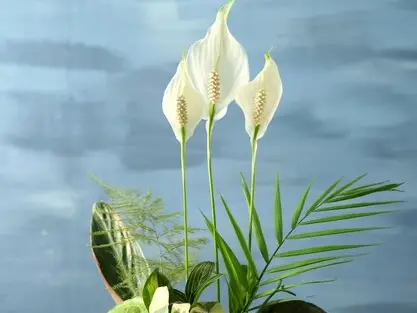
Another disease that can afflict peace lilies is root rot, often caused by overwatering or poor drainage. Root rot can lead to wilting, yellowing of the leaves, and a foul smell coming from the roots. To combat root rot, it is essential to adjust your watering habits. Allow the soil to dry out slightly between waterings and avoid leaving your peace lily sitting in standing water. If the roots are severely affected, consider repotting the plant in fresh, well-draining soil to prevent further damage.
By being vigilant and promptly addressing common diseases in your peace lily, you can ensure its continued health and vitality. Providing a suitable environment, including proper lighting, temperature, and humidity levels, will also contribute to its overall well-being. In the following sections, we will explore additional essential topics, such as managing environmental stress and troubleshooting common issues, to further equip you with the knowledge and strategies needed to care for your peace lily effectively.
• Leaf spot, caused by the fungi Cercospora or Septoria, is a common disease that affects peace lilies.
– Small brown or black spots may appear on the leaves.
– Infected leaves should be removed and discarded.
– Ensure adequate air circulation and avoid overcrowding to control the spread of leaf spot.
– Applying a fungicide labeled for use on houseplants can help manage the disease.
• Root rot can afflict peace lilies due to overwatering or poor drainage.
– Symptoms include wilting, yellowing of leaves, and a foul smell from roots.
– Adjust watering habits by allowing soil to dry out slightly between waterings.
– Avoid leaving the plant in standing water to prevent root rot.
– Consider repotting in fresh, well-draining soil if roots are severely affected.
• Vigilance and prompt action are key in maintaining your peace lily’s health and vitality.
Providing suitable environmental conditions such as proper lighting, temperature, and humidity levels also contribute to its overall well-being.
Managing Environmental Stress: Tips for Protecting Your Peace Lily from External Factors
Environmental stress can have a significant impact on the health and well-being of your peace lily. As a gardener, it’s important to understand the external factors that can affect your plant and take appropriate measures to protect it. One key aspect of managing environmental stress is providing the right amount of light. Peace lilies thrive in bright, indirect light but can also tolerate some shade. Placing your plant near a window with filtered sunlight or using a sheer curtain to diffuse direct light can help strike the optimal balance. Keep in mind that too much direct sunlight can scorch the leaves, while too little light can result in weak growth and poor flowering.
Temperature is another factor that can affect your peace lily’s well-being. These plants prefer temperatures between 65-85°F (18-29°C), but they can tolerate slightly cooler or warmer conditions. Avoid exposing your peace lily to temperature extremes, as this can lead to stress and damage. It’s best to keep your plant away from drafts, air conditioning units, and heating vents, as sudden temperature fluctuations can be detrimental. Remember, maintaining a consistent and moderate temperature will promote healthy growth and overall plant vigor.
| Watering and Humidity Management Tips | Details |
|---|---|
| Balancing Watering | Strike a balance in watering to avoid issues—overwatering can lead to root rot, while underwatering causes wilting. |
| Watering Frequency | Water when the top inch of soil feels dry, using room temperature water, and ensure drainage holes in the pot. |
| Preventing Standing Water | Avoid letting the plant sit in standing water; use pots with drainage holes and remove excess water after watering. |
| Humidity Considerations | Peace Lilies thrive in high humidity; consider placing near a humidifier, misting with room temperature water, or using a pebble tray. |
| Managing Dry Climates | Increase humidity in dry climates by using a pebble tray with water or grouping multiple plants together. |
By following these tips for managing environmental stress factors such as light exposure, temperature control, proper watering techniques, maintaining humidity levels, and preventing pest infestations; you will be able to protect your peace lilies and ensure their health and vitality for years to come
Enhancing Humidity Levels: Creating a Suitable Environment for Your Peace Lily
Maintaining the appropriate humidity levels is crucial for the health and well-being of your peace lily. These tropical plants thrive in high humidity environments, mimicking their native habitat. By creating a suitable environment with enhanced humidity, you can ensure optimal growth and vibrant foliage for your peace lily.
One effective way to enhance humidity levels for your peace lily is by employing the use of a humidifier. Humidifiers emit fine water particles into the air, increasing the moisture content and creating a more humid environment. Place the humidifier near your peace lily, ensuring that it is within the plant’s proximity to maximize the benefits. Regularly monitor the humidity levels using a hygrometer, aiming for a range of 50% to 60% humidity, which is ideal for peace lilies.
Another natural and cost-effective method to boost humidity is through the use of a pebble tray. Simply fill a shallow tray with water and place it near your peace lily. Then, arrange pebbles or stones in the tray, creating a surface area for the water to evaporate from. As the water evaporates, it increases the surrounding moisture, providing the peace lily with the humidity it needs. Be sure to refill the tray as needed to maintain a consistent humidity level.

By employing these humidity-enhancing techniques, you can create a suitable environment for your peace lily, promoting healthy growth and maintaining its lush appearance. Remember to consistently monitor the humidity levels to ensure they remain within the recommended range.
| Humidity Enhancement Tips | Details |
|---|---|
| Using a Humidifier | Employ a humidifier to release fine water particles and elevate moisture content in the air around the Peace Lily. |
| Optimal Placement of Humidifier | Position the humidifier near the Peace Lily for maximum benefits, ensuring the plant receives increased humidity. |
| Monitoring Humidity Levels | Regularly use a hygrometer to monitor humidity levels, aiming for a range of 50% to 60% for optimal plant health. |
| Utilizing a Pebble Tray | Create a pebble tray by filling it with water and placing it near the Peace Lily to enhance local humidity. |
| Arranging Pebbles for Evaporation Surface Area | Arrange pebbles or stones in the tray to create a larger surface area for water evaporation, promoting increased humidity. |
| Refilling the Tray as Needed | Maintain consistent humidity levels by refilling the tray as needed, ensuring a suitable environment for the Peace Lily. |
Grooming and Cleaning: Maintaining the Aesthetics of Your Peace Lily
Grooming and cleanliness are key factors in maintaining the aesthetics of your peace lilies. These elegant houseplants possess lush, dark green leaves that enhance any indoor space. Regular grooming practices will not only keep your peace lily looking its best but also contribute to its overall health and vitality.
One essential grooming task for peace lilies is the removal of yellow or browning leaves. As these leaves age, they naturally turn yellow or brown, indicating that they are no longer contributing to the plant’s energy production. Gently plucking these leaves at the base will not only enhance the plant’s appearance but also prevent the potential spread of diseases or pests. Keep in mind that it’s normal for peace lilies to shed a few older leaves over time. However, if you notice excessive leaf loss or persistent yellowing, it may indicate underlying issues that require further investigation.
In addition to leaf maintenance, cleaning the foliage of your peace lily is essential to remove dust, dirt, or any other particles that may accumulate over time. Dusty leaves not only compromise the plant’s aesthetics but can also hinder its ability to photosynthesize effectively. To clean your peace lily’s leaves, gently wipe them with a soft, damp cloth or sponge. This simple yet effective process will restore the plant’s natural shine and allow it to fully harness the available light. Regular cleaning every few weeks will help your peace lily thrive and maintain its striking appearance.
• Regular grooming practices are essential for maintaining the aesthetics of peace lilies.
• Removing yellow or browning leaves is an important task to enhance the plant’s appearance and prevent the spread of diseases or pests.
• Excessive leaf loss or persistent yellowing may indicate underlying issues that need further investigation.
• Cleaning the foliage of peace lilies is necessary to remove dust, dirt, and other particles that can hinder photosynthesis.
• Gently wiping the leaves with a soft, damp cloth or sponge will restore their natural shine and optimize light absorption.
• Regular cleaning every few weeks will help peace lilies thrive and maintain their striking appearance.
Troubleshooting Common Issues: Solutions for Common Peace Lily Problems
One of the most common problems that peace lily owners face is yellowing leaves. This can be attributed to a few different factors, including overwatering, underwatering, or insufficient lighting. To troubleshoot this issue, it is important to assess the watering habits and light conditions of your peace lily.
If you notice that the soil is consistently wet and waterlogged, it is likely that overwatering is the culprit. Peace lilies prefer slightly moist soil, but overwatering can lead to root rot and yellowing leaves. To address this, allow the top inch of soil to dry before watering again. Ensure that the pot has proper drainage to prevent water from accumulating at the bottom.
On the other hand, underwatering can also cause yellowing leaves. Peace lilies should not be allowed to completely dry out between waterings. If the soil feels dry to the touch, it is time to water your plant. Be sure to water thoroughly, allowing excess water to drain out of the pot. Regular misting can also help to increase humidity levels around the plant and prevent leaf yellowing.
• Assess the watering habits and light conditions of your peace lily
• If the soil is consistently wet and waterlogged, overwatering may be the issue
– Allow top inch of soil to dry before watering again
– Ensure proper drainage in pot to prevent water accumulation at bottom
• Underwatering can also cause yellowing leaves
– Do not let soil completely dry out between waterings
– Water thoroughly, allowing excess water to drain out of pot
– Regular misting can increase humidity levels and prevent leaf yellowing
Advanced Care Techniques: Going Beyond the Basics to Achieve Optimal Growth for Your Peace Lily
One of the key factors in achieving optimal growth for your peace lily is to provide it with the right amount of humidity. While peace lilies can tolerate a range of humidity levels, they thrive in environments with higher humidity. This is because they are native to tropical regions where humidity is naturally high. You can enhance the humidity levels around your peace lily by placing a tray filled with water near the plant or using a humidifier. By paying attention to the humidity levels, you can create a suitable environment that promotes healthy growth for your peace lily.
In addition to maintaining proper humidity levels, providing your peace lily with adequate air circulation is another essential advanced care technique for optimal growth. Good air circulation helps prevent the buildup of stagnant air and can reduce the risk of pests and diseases. You can improve air circulation by placing your peace lily in a room with good ventilation or by using a fan to gently move the air around the plant. Remember to avoid placing your peace lily near drafts or exposed to direct airflow, as this can lead to stress and damage to the plant.
| Humidity Management and Air Circulation Tips | Details |
|---|---|
| Providing the Right Humidity | Maintain optimal humidity by placing a tray filled with water near the Peace Lily or using a humidifier. |
| Grouping Peace Lilies | Group multiple Peace Lilies together to create a microclimate that retains moisture, enhancing overall humidity levels. |
| Monitoring Humidity Levels | Regularly monitor humidity levels to ensure they fall within the appropriate range for healthy growth (e.g., 50% to 60%). |
| Ensuring Adequate Air Circulation | Place the Peace Lily in a well-ventilated room or use a fan to promote air movement around the plant. |
| Ventilation Considerations | Avoid placing the plant near drafts or direct airflow to prevent stress and damage to the Peace Lily. |
| Promoting Overall Health and Vitality | Improve the plant’s health and vitality by prioritizing proper air circulation, which supports its growth and well-being |
How often should I water my peace lily?
Peace lilies prefer to be kept evenly moist, so it’s generally recommended to water them when the top inch of soil feels dry. Avoid overwatering or letting the plant sit in water.
Can I use tap water to water my peace lily?
Peace lilies are sensitive to chemicals like chlorine and fluoride found in tap water, so it’s best to use filtered or distilled water. Alternatively, you can let tap water sit out overnight to allow the chemicals to dissipate before using it.
How often should I fertilize my peace lily?
Peace lilies benefit from regular fertilization during the growing season, usually from spring to summer. Apply a balanced, water-soluble fertilizer every 4-6 weeks, following the package instructions for proper dilution.
Can I repot my peace lily anytime?
It’s best to repot your peace lily when it becomes rootbound, typically every 1-2 years. Spring is the ideal time for repotting, as the plant is actively growing and can recover quickly.
What type of soil is best for peace lilies?
Peace lilies prefer a well-draining potting mix that retains some moisture. A mix containing peat moss, perlite, and composted bark works well. Avoid heavy or compacted soils.
How can I propagate my peace lily?
Peace lilies can be propagated through division. Carefully remove the plant from its pot and separate the root clumps into smaller sections, each with a few leaves and roots. Plant these divisions in separate pots, keeping the soil moist until they establish.
How can I prevent pests from infesting my peace lily?
Regularly inspect your peace lily for signs of pests like aphids, mealybugs, or spider mites. You can use insecticidal soap or neem oil to control them. Additionally, maintaining a clean environment and avoiding overwatering can help prevent pest infestations.
What are the common diseases that can affect peace lilies?
Peace lilies are susceptible to root rot, leaf spot, and fungal diseases like powdery mildew. Proper watering practices, good air circulation, and avoiding overhead watering can help prevent these diseases. If your plant shows signs of disease, remove affected parts and treat with appropriate fungicides if necessary.
How can I protect my peace lily from environmental stress?
Peace lilies are sensitive to extreme temperatures, drafts, and direct sunlight. Keep them away from cold drafts, air conditioning vents, or heat sources. Place them in a location with indirect, filtered light to avoid leaf burn.
How can I increase humidity levels for my peace lily?
Peace lilies appreciate higher humidity levels. You can increase humidity by placing the plant on a tray filled with water and pebbles, using a humidifier in the room, or grouping plants together to create a microclimate.
Can I prune my peace lily to control its size?
Yes, you can prune your peace lily to remove yellow or brown leaves, spent flowers, or to control its size. Use clean, sharp pruning shears and make cuts just above a leaf node. Regular grooming will keep your peace lily looking neat and healthy.
My peace lily is not blooming, what can I do?
Lack of blooming in peace lilies can be due to insufficient light, improper watering, or lack of nutrients. Ensure your plant is receiving adequate indirect light, water it properly, and fertilize regularly during the growing season. This should encourage blooming.
Why are the leaves of my peace lily turning yellow?
Yellow leaves in peace lilies can indicate overwatering, underwatering, or exposure to direct sunlight. Adjust your watering schedule, ensure proper drainage, and move the plant to a location with indirect light to prevent yellowing leaves.
How can I revive a wilted peace lily?
If your peace lily is wilted, it may be due to underwatering or overwatering. Check the moisture level of the soil, and water accordingly. Trim off any severely wilted leaves and provide the plant with proper care and conditions to help it recover.

Beck Wakeford is a dedicated writer at SouthElMonteHydroponics, with a fervent enthusiasm for agriculture and technological innovation. Armed with a degree in Agricultural Engineering from a leading university, Beck specializes in hydroponic systems design, automation, and optimization. Their passion for merging traditional farming with cutting-edge technology drives them to explore novel solutions for sustainable food production. Beck’s expertise and keen interest in the intersection of engineering and agriculture make them a valuable asset in the quest for efficient and eco-friendly farming practices. Through their writing, Beck aims to inspire others to embrace the potential of hydroponics in shaping a more sustainable future.

